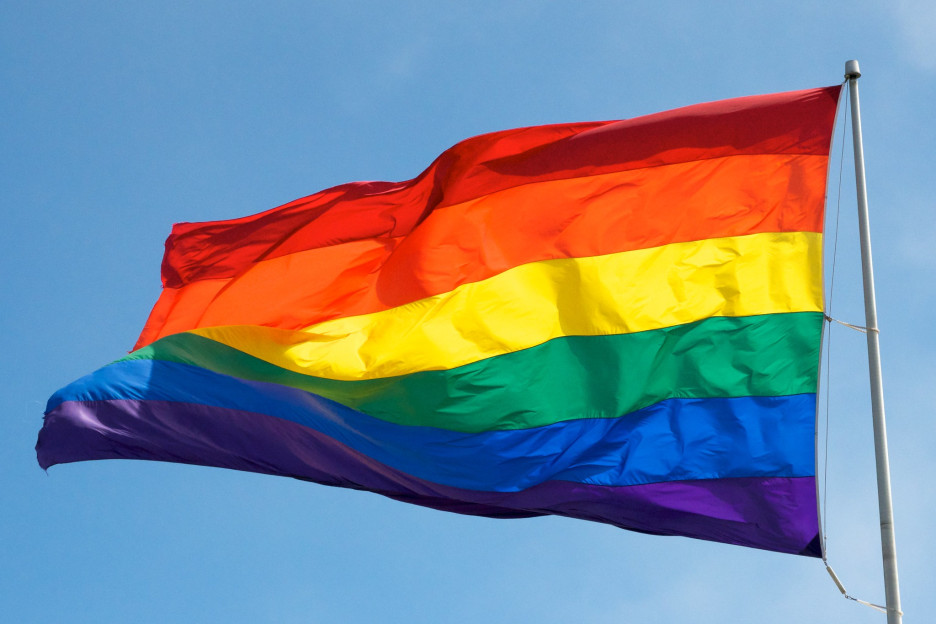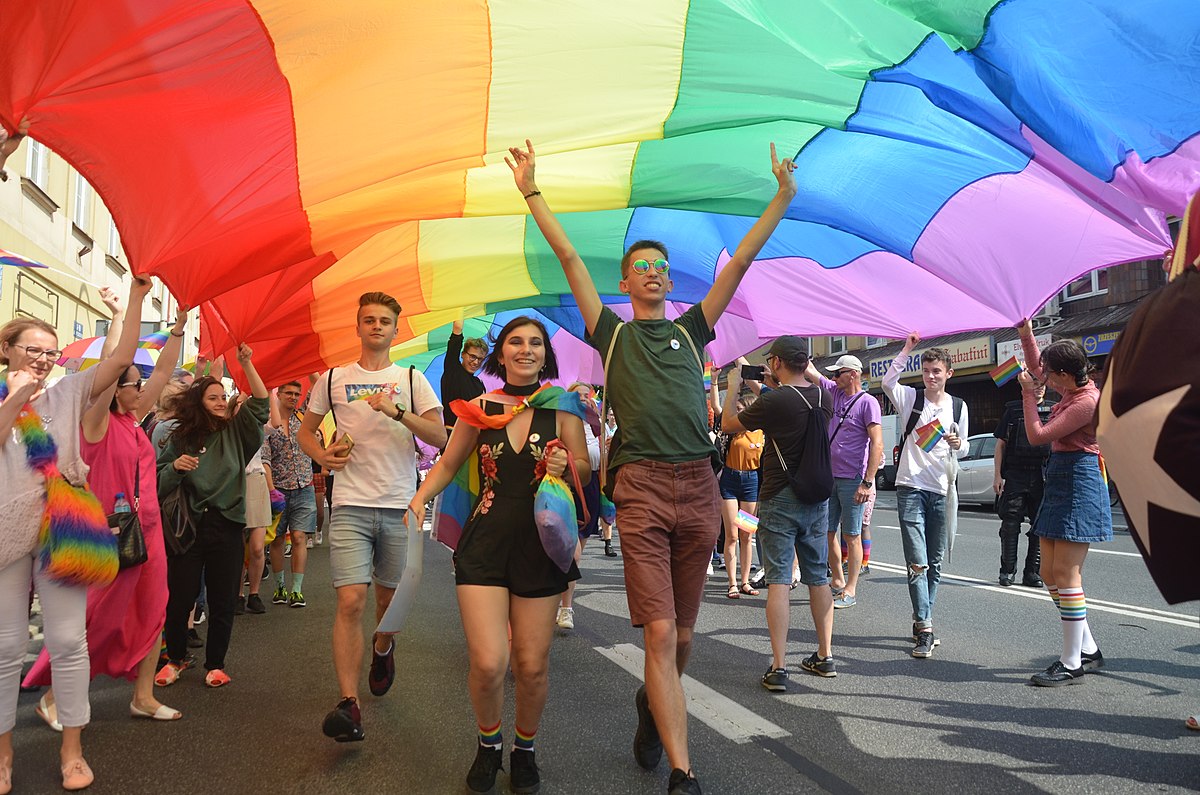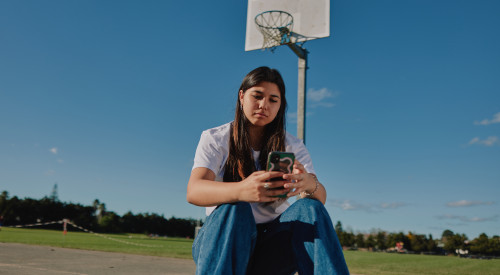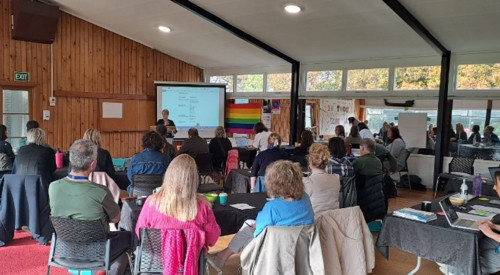How students are leading the way in making schools safe for rainbow youth
News 31 August 2023

For LGBTQ+ high school students in Aotearoa, student-led rainbow youth groups have become an increasingly important part of helping them feeling safe at school.
Student-led action describes when students organise and execute initiatives to achieve a goal or address issues at school. School rainbow groups are often started with the help of teachers and provide a safe space for students to discuss gender and sexuality issues and feel supported and affirmed.
A key part of the Tūturu kaupapa is creating room for students to have greater agency in their education, particularly when it comes to health and wellbeing. What can we learn from schools with student-led rainbow support groups, and how can we apply those lessons to more schools?
Getting started
Jessica Lach is a teacher at Columba College in Dunedin. Upon starting her job as School Wellbeing Co-ordinator, one of the first things she did was audit the school's approach to health. This quickly confirmed what she had already heard from some students; that the school needed to create a space where rainbow students could feel affirmed and be themselves.
The idea aligned with the school’s values of aroha and respect and when she presented it to management, it was readily supported. Soon, lunchtime meetings of the Rainbow Youth Group became a regular feature of the school’s week and over six years it has grown in strength and influence.
Though Lach continues to be involved, she determined from the beginning that it should be student led.
“Students know best the issues confronting young people around gender and sexuality”, she says. “They are the ones /hearing the comments in their social groups. They’re getting the texts and seeing what’s online. They know what is relevant for them and their peers and they understand what needs to be advocated for and educated about in the school context.”
Lach’s role with the group is providing support and guidance, especially for the leaders, and she maintains that the student-led model has benefits for those involved, as well as the wider school.
Educative functions and impact on school culture
Lach’s view about the positive impacts of student-led action is supported by a growing body of theory and research (NZCER 2022, TKI 2016.) Drawing on theories of constructivism and transformational teaching, student-led action engages students in critical thinking, decision making and problem solving. It builds students’ agency when they take control of things that happen around them and it leads to self-efficacy and the empowerment of learners.
Shardae Glenfell has seen this first-hand across Aotearoa. As School Services Manager for InsideOUT Kōaro, a national education support charity for rainbow communities, she and her colleagues have watched students involved in rainbow groups find new confidence and skills.
“They develop facilitation and organisational skills as they run meetings and plan events,” says Glenfell. “They develop emotional literacy when they support peers within the group, who can be struggling with poor mental health or a lack of well-being. Sometimes, if they are doing advocacy work, interacting with teachers, school management or even the Board, they develop political skills.”
While student-led initiatives are at the heart of this movement, the backing of educators and school management is crucial for these efforts to truly take root and thrive.
Students’ perspectives of rainbow youth groups

Lucas joined the Columba College Rainbow Youth in Year 8. It was a safe, fun space for students exploring their gender and sexuality.
“For a school to allow that space can be life changing for young people,” he says. “If you are on a journey with gender and sexuality issues without support, you can be on the edge. So, it’s important to have some place where you can be yourself and know that it is okay to be ‘different.’”
By year 10, Lucas felt confident enough to come out. Within the group he’d developed the skills to respond to the questions and comments that followed and now as a leader, he feels a responsibility to his younger peers.
“It's definitely my goal to ensure the group remains the safe, judgement-free place that helped me in my early days,” he says.
In schools across the country rainbow groups perform a vital educative function. Nayland College was one of the first to establish a Gay/Straight Alliance (GSA) group and year 11 student Amy* says that the group fills a vacuum for students exploring sexuality and gender.
“You can find articles and stuff online, but you’re likely to end up in a rabbit hole that’s really negative. You can end up thinking that being gay is a terrible thing. So yes, it is really good to have a safe supportive space to be educated in.”
That education comes informally as well as through organised workshops facilitated by students and sometimes staff. Attendees who identify as rainbow and their straight friends benefit from the exchange of ideas.
“I have straight friends who have learned a lot from attending the group,” says Amy. “Their attitudes have changed from learning more about sexuality, gender and diversity.”
Jove is a rainbow leader at an Auckland girl’s school where the rainbow group often has student-led education sessions.
“We might have an educational slideshow on queer and trans related current events, or history. Or it can be things like how to come out, or approach queerness in school or with parents.”
As well as supporting and educating their own members, student-led rainbow groups can have a significant effect on the wider school.
Lach and Lucas describe how Columba College’s rainbow wall, with its mural, frequently changing flags and information, creates discussion and awareness amongst students. The group further grows its visibility through bake sales and library displays such as the Out on the Shelves month, as well as activity during Pride Week.
“Obviously the group can’t take all the credit,” says Lach. “But over the years there’s been a big change in the discourse around these events and around inclusivity generally. I’m certain rainbow students’ activities have had a big influence.”
At Nayland College the rainbow group has had input into the school delivery of the health curriculum, while Jove’s school made changes to the school uniform, following submissions from students.
Jove is currently preparing to present to school management, asking for more uniform flexibility to accommodate the needs of all students. At the same time, he and a co-leader are planning an education session for senior students to promote greater rainbow acceptance.
“We also have an ambitious project to host a parents’ evening that focuses on queer and trans children. I think it could have a positive impact for our students. It would also be impactful for a prestigious school like ours to host an event that promotes acceptance and open-mindedness.”
Like Lucas, Jove credits membership of the rainbow group with providing him with the self-confidence and advocacy skills to enable his activism. He’s learned how to plan and implement action for change.
“Being a member of a group run by students has been super empowering. I’ve always wanted to make a positive impact and now I’m doing that on bigger and bigger scales,” he says.
Jessica Lach says that where rainbow youth flourish, a healthier school culture follows.
“It takes time but when rainbow students don’t have to fight for their identity, there’s a lowering of anxiety and they can focus on learning. It’s a lot easier for everyone.”
Dr John Fenaughty, who has done extensive research around student wellbeing, has the same message for educators.
“Schools have the opportunity to either provide positive experiences, or to expose young people to stress. The role of stress produced by bullying and discrimination is well
established as a link to harm for rainbow youth and all young people,” Dr Fenaughty says.
Shardae Glenfell says that student-led rainbow groups are uneven across the country. Students wanting to set up a support group often encounter resistance from senior leadership teams or from teachers.
“Sometimes they'll be told there's no need for the group or that the school, for whatever reason, doesn't want one. Sometimes students are told there are not enough rainbow students in the school to warrant the formation of such a group. At other times issues of privacy and safety are given as a reason,” says Glenfell. “That’s why we recommend setting up a QSA (Queer/Straight Alliance) group where everyone can come along. You are not outing yourself by turning up to the group.”
Role of teachers and school management
While student leadership is critical to the success of rainbow groups, support from teaching staff is necessary.
Zoe Findlay, the youth development and rainbow inclusion specialist, says from a school perspective, the kaupapa of creating inclusive communities requires buy-in from the top. “The Board needs to give its support alongside school management. Then you really need a solid group of teachers, who are either part of the rainbow community or strong allies, who will support the young people.”
“Being at the forefront and leading out any kind of inclusivity in school makes young people more vulnerable to bullying or attacks from other students. So, as adults we need to ask ourselves how we can support them to take ownership while remaining safe.”
While acknowledging that building inclusive communities takes time, Findlay says that the process can be given greater momentum when teachers and management undertake professional development around diversity.
“Many teachers have little or no understanding of the rainbow community, so increasing that knowledge is a big part of encouraging a culture shift and creating a safe space,” she says.
The combined efforts of students, teachers, and school management create a harmonious environment where inclusivity is celebrated. However, beyond the walls of the educational institutions, it's the skills and values these students imbibe that truly stand testament to the success of these initiatives.
All students deserve the opportunity to find their voice and lead action within a safe school environment. Many teachers routinely build student-led action into curriculum delivery, especially in health and physical education areas. The measure of success is based on the knowledge and skills they've acquired through the process of taking action to improve the wellbeing of their community.
Tūturu has several resources aimed at empowering students to improve their critical thinking skills. Check out our Support student-led action resource here.
*Name altered by request.
Recent news

What Tūturu is learning about youth gambling this Gambling Harm Awareness Week
2 September 2024
This Gambling Harm Awareness Week (2-8 September 2024), we want to highlight the health impacts gambling can have on young people, and what we want to do about it.

Supporting Students: A Wellbeing Lens – Dunedin Tūturu Whole School Approach Day 2024
2 July 2024
In May, schools from throughout Otago and staff from orgs such as Te Whatu Ora, NZ Police and MOE gathered to hear from a range of speakers on how best to meet the needs of secondary school students.
How can schools better handle student mental health and wellbeing? Insights from NZCER's secondary principals' survey
25 March 2024
In November 2023, the results of a 2022 nationwide survey of secondary school principals in Aotearoa revealed that the top issue they ranked dealing with at school was providing support for students grappling with mental health or wellbeing issues.